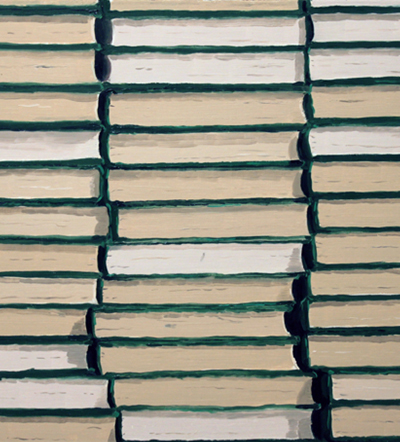![]()
![]()
Just weeks ago the Danish architecture office BIG (Bjarke Ingels Group) made it very, very big, unveiling their design for a new pyramid-shaped apartment tower in midtown Manhattan. So their first monograph, “Yes is More,” comes as a happy surprise. Unlike typical starchitect monographs, packed with stiff, self-congratulatory photographs, it’s a comic book that casts Bjarke Ingels, the office’s charismatic young leader, as a superhero who flies around the world designing buildings, calling upon his tireless staff of architects back home in Copenhagen for support.
It’s a saucy, surprising self-presentation. Most architects, especially successful ones, take themselves very seriously. The book’s title is a playful — and useful — inversion of modern architect Mies van der Rohe pronouncement, “Less is more.” It’s also a bright spot of optimism in the face of a troubled global economy that has devastated the construction and architecture industries. Bjarke Ingels, superhero, challenged by limited budgets, restrictive schedules, and demanding clients, nonetheless always finds a way to get things done.


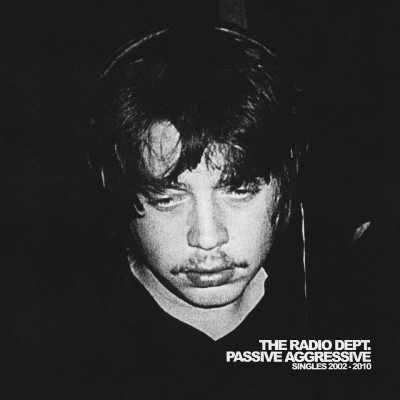
Labrador/Caroline Records
Sweden’s morphing group Radio Dept. has been sporadically releasing material for the past ten years. Passive Aggressive: Singles 2002-2010 collects this cool people’s band’s releases over the last decade. A cratedigger’s dream, featuring both A- and B-sides, Passive Aggressive shines a light on the group’s evolution — or lack thereof. The earlier recordings are similar in their moody, almost aggressive, shoe-gazing nature. On “Freddie And The Trojan Horse”, however, light guitar plucks take the place of the jagged fuzz the style is known for, and lively piano takes center stage, passifying the sound. The four numbers included from Radio Dept.’s 2010 full-length, Clinging To A Scheme, feature a stronger hold on melody than the muddy ones leading to this release.
Audio clip: Adobe Flash Player (version 9 or above) is required to play this audio clip. Download the latest version here. You also need to have JavaScript enabled in your browser.
Buy this at iTunes. After the jump, check out the video for “Never Follow Suit”.

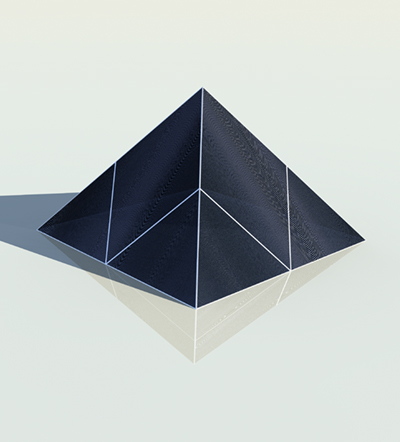
Image Courtesy of Robert Flottemesch. (Click for slideshow)
![]()
While the people of Egypt are anticipating a bold new future for their country, thanks to the powerful protests by demonstrators in recent weeks, an American artist has been recognized for his exciting plan to bring future-minded energy of a different sort to the Middle East.
Robert Flottemesch and his team of collaborators received the Land Art Generator Initiative’s grand prize last month for the design of Lunar Cubit, a blueprint for a 50-meter-tall solar paneled pyramid surrounded by eight 22-meter-tall pyramids, each of which represents a different phase of the lunar calendar. The intended construction site is five kilometers from Abu Dhabi’s international airport in the United Arab Emirates, the host country of the World Future Energy Summit, where the prize was presented. Flottemesch accepted the award with his landscape designer Johanna Ballhaus, his artistic consultant Jen DeNike, and Adrian De Luca, who helped develop the project’s data monitoring system.
Making use of the design template left by the ancient Egyptians was a longstanding goal of Flottemesch’s. “Ever since I visited the pyramids when I was much younger, the mystery that has surrounded them and the scope of the engineering has been something that I find quite significant,” he tells PLANET.

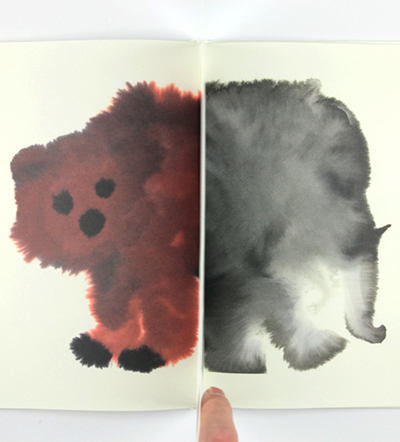
![]()
Vivid watercolors seep into the page and emerge with life. Page by page a menagerie of wild creatures reveal themselves: a baby fawn, a pig, a parrot and many more, each one rendered in the same colorful wet wash technique. Rop Van Mierlo’s book, Wilde Dieren (Wild Animals), showcase this illustrator, graphic designer and animator’s talent in all fields. Each critter is embodied with the sensation of watercolors soaking into the paper. Displayed with immediacy, the animals spring to life from their minimal white background. Van Mierlo attended the Design Academy in Eindhoven studying “Man and Communication,” as well as the Willem de Kooning Academy, where he studied Graphic Design. His modern education has taught him to “ask questions and not give answers” and has yielded impressive work. The red McCaw’s wings look blotchy and soaked and the tiger seems to drip his strips, each creature taking on a new kind of life. This 34 page book is a unique living experience, every beast as absorbing as the next.
Rop Van Mierlo


AUTOMATIC Automatic, New York, USA, by Formavision. Copyright Gestalten 2010. (Click for Slideshow)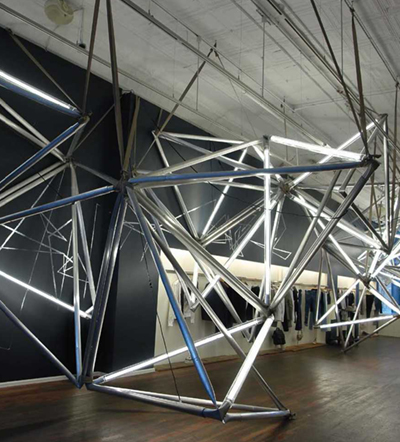
![]()
Everyone knows how it feels to walk down a city street that they’ve walked down many times before only to find that a familiar shop or restaurant has disappeared, been remodeled beyond recognition, or replaced with something new. Although we accept these spaces as fixed elements of our environment they’re really quite ephemeral. Even if a building survives for hundreds of years, it’s refashioned again and again to suit changing needs and tastes.
A new book, “Staging Space,” spotlights some impactful contemporary interiors whose power lies in their theatricality — in the assertive way that they shape the way we live, work and entertain ourselves. The designs featured in the book don’t hold back, using the boldest geometries, colors, and lighting to hold a visitor’s attention. This strategy works best in spaces that people spend a limited amount of time inside of, like stores and restaurants. A denim shop in New York City gives over its central space to an enormous, tree-like light sculpture, while the clothes hang quietly along the wall. A sweater shop in Osaka is lined with an arched, honeycomb-like plywood shelving system that gives it a happy, trippy feeling.
Other designs shape a radically inward-looking space that pulls inhabitants away from the larger environment. Exhibit spaces and offices are often designed this way, in order to divert an occupant’s attention from outside concerns.

With our eyes turned toward Egypt, Stephan Said implores us to lend our ears as well. The Arab-American artist, who boasts acclaim for his anti-war songs, teed up a rock-infused version of the Egyptian civil rights anthem “Aheb Aisht Al Huriya” (“I Love the Life of Freedom”). Originally penned in the 1930s by Mohamed Abdel Wahab, the historic song fits the decades-old situation coming to a head in Egypt. In the simple accompanying video, Said holds a notebook with the English translation of the earnest lyrics for the camera. The activist introduces the song as a beacon for non-violent advocates “to build the international movement for a more just society.” Intended for release on the forthcoming album, difrent (out in September), Said unveiled the song early for maximum potency.
![]()
Audio clip: Adobe Flash Player (version 9 or above) is required to play this audio clip. Download the latest version here. You also need to have JavaScript enabled in your browser.


![]()
![]() It’s been a brutal winter across much of the United States, with storm after storm blanketing great stretches of the country in glacial layers of white. But at a higher latitude, there’s a different story being told. The National Snow and Ice Data Center has reported unprecedented lows in the Arctic sea ice extent for the month of December, dating back to its first satellite observations. And temperatures in normally frozen regions have been as much as 18 degrees Fahrenheit above average, making the Arctic a hotspot for increased concern.
It’s been a brutal winter across much of the United States, with storm after storm blanketing great stretches of the country in glacial layers of white. But at a higher latitude, there’s a different story being told. The National Snow and Ice Data Center has reported unprecedented lows in the Arctic sea ice extent for the month of December, dating back to its first satellite observations. And temperatures in normally frozen regions have been as much as 18 degrees Fahrenheit above average, making the Arctic a hotspot for increased concern.
As Sara Wheeler tells it, the snow-capped top of the globe has traditionally found itself at the center of controversy. In her newly released travelogue The Magnetic North, she tells of the territorial disputes, displaced societies, political persecution, and cases of environmental destruction that have all centered on the Arctic throughout history. Today’s news is mirrored in countless affairs of the past. Consider that before the far north became a battleground between nations over claims to oil and natural gas reserves, it was home to a chain of Cold War era Distant Early Warning radar stations set up by the enemy superpowers and was the shortest path between the continents for potential ballistic missile launches. Or keep in mind that long predating the polar bear’s endangerment at the hands of climate change and before pollutants like PCBs found their way into the Arctic food chain, Elizabethan merchants hunted and depleted whale populations for their oil and land mammals for their fur in the Canadian Arctic.


A wise friend of mine once rhetorically asked me, “Who doesn’t love books?” From now until February 26, Ex Libris — a bookworm’s dream of an exhibition at Adam Baumgold Gallery — is the resounding answer. Literally meaning, “from the books,” the show features book-inspired work by 28 different artists including titans such as Ed Ruscha, Chris Ware, David Hockney, and Tom Burckhardt. So long as the art stays true to the rather loose theme, anything goes. Thus viewers can expect everything from artists’ books and prints to drawings and sculpture, with nods to Kant, Burroughs, Proust, pulp fiction and comics laced throughout. The sheer variety of different pieces suffuses the show with a playful yet deferential tone as artists pay homage without ever taking themselves too seriously. Jennie Ottinger’s delicate book cover paintings of Truman Capote’s In Cold Blood and Salman Rushdie’s The Satanic Verses are just one example. At the risk of sounding overly dramatic, no true lover of books should miss this show.
Adam Baumgold Gallery

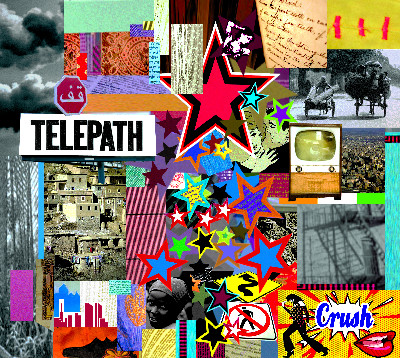
Homegrown Music
Serendipity swept up producer Michael Christie, better known as Telepath, and carried him to far-flung destinations to capture celebratory scenes. Searching for and collaborating with international artists — some of whom he has never met — brought new experiences and tones to his music. The well-seasoned producer supplies traces of Western staples, but lets his guests color the songs any which way. From urban cool to sultry Marrakesh to Bollywood’s rapturous ballyhoo, Christie and his cast populate a sonic landscape spanning emotions and experiences. Crush shares the talents of the legendary, including Pervez Khan’s excellent sitar playing and vocals on “Dust”. Combining electronic effects and Western instruments to sounds typically associated with Eastern cultures is not a new approach; however, Christie’s distinctive mark imaginatively steers the album. A typical record from Telepath would be instrumental, but Christie flexed his creative muscles to pen vocals, which serve as a “lifeline”, he says, for audiences. In resistance to wandering astray, Crush suggests a producer at the top of his game.
Audio clip: Adobe Flash Player (version 9 or above) is required to play this audio clip. Download the latest version here. You also need to have JavaScript enabled in your browser.
Buy this at iTunes.

BRONX FLOOR FLOOR HOLE 01 Gordon Matta-Clark Bronx Floor: Floor Hole, 1972 courtesy of the Estate of Gordon Matta-Clark and David Zwirner Gallery (Click for slideshow)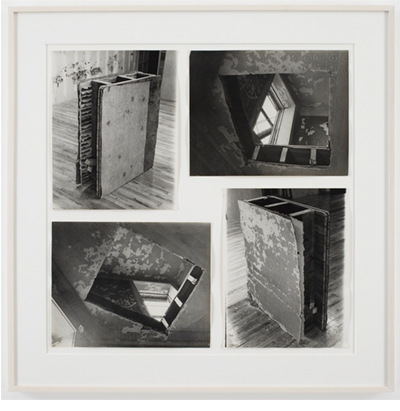
![]()
In 1975 the young American artist Gordon Matta-Clark took a chainsaw to a perfectly ordinary single family house in Englewood, New Jersey and split it in two. While the stunt smacked of bad-boy behavior and art world sensationalism, it was hardly an act of anarchy or desperation. Rather, it was the intervention of an artist with the keenest sensitivities renouncing commercialism in search of a more elemental understanding of space and materials.
A new exhibit at the David Zwirner Gallery collects artworks from 112 Greene Street, the legendary gallery Matta-Clark founded in SoHo in 1970. That space became a haven for a vibrant, eclectic group of New York artists who gathered, debated, performed, and exhibited there. This survey, which includes many pieces by Matta-Clark himself, brings that world richly to life and illuminates the themes of his work, themes that are as resonant today as they were forty years ago.
Educated as an architect, Matta-Clark left the profession to create sculptures, installations, films and photographs that often employed architectural forms and materials in unorthodox, unsettling ways. His most famous works are “cuttings,” strategic slicings, removals, and recombinations of parts of existing buildings.







 Facebook
Facebook Permalink
Permalink Digg
Digg Reddit
Reddit LinkedIn
LinkedIn StumbleUpon
StumbleUpon Tumblr
Tumblr